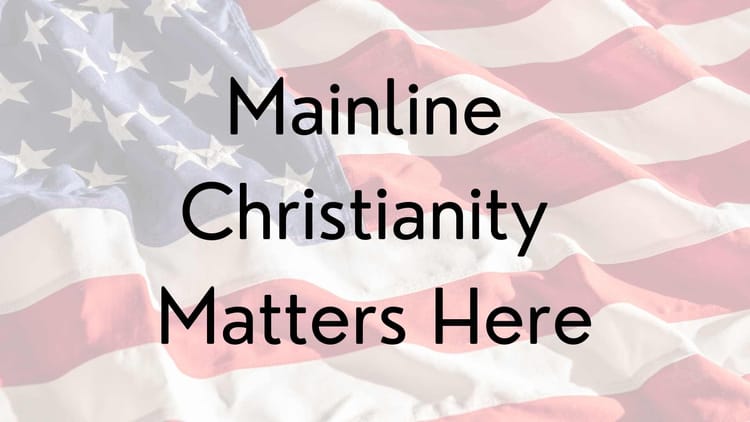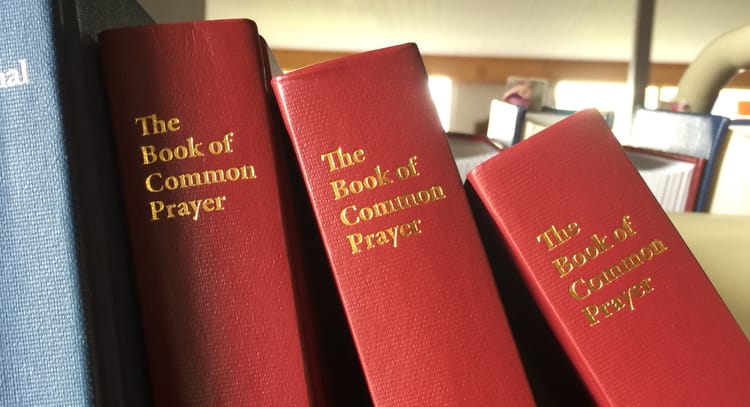How should the church work?

This post is a response to the Acts 8 Moment Blogforce Question: What is the mission of the (Domestic and Foreign) Missionary Society (of the Protestant Episcopal Church of the United States of America) or whatever you currently insist on calling it? How should it be structured to serve its mission?
Before I answer this Blogforce question, I have to first acknowledge that I missed the first two rounds on mission and structure. Earlier commenters offered their thoughts on 1) the mission and structure of the local congregation and 2) the mission and structure of the diocese. I was working on the Christian food movement guide [2025 update: it's so outdated I don't link to it anymore], and watched these two Blogforce challenges with a certain wistfulness: I wanted to respond, but there just wasn’t time.
But, to set the context for today’s post, I need to offer a quick summary of my thoughts on each of those questions. So, to begin:
Each local congregation‘s mission is to know Christ and make Christ known by practicing discipleship together in place. Practicing discipleship consists of keeping our baptismal vows. Doing so “in place” means that we do this with an awareness that we are created beings, of one membership with all Creation in our geographic location. The local congregation should be structured in a manner which: 1) is appropriate to its size, context and history; and 2) reflects and makes evident a focus on growing and making disciples.
The diocese is the basic mission unit of the church. (Thanks to the Rev. Gay Jennings for this insight which I gleaned from the Acts 8 Tweetchat on the topic!) As such, it must provide for the proclamation of the gospel, the administration of the sacraments, and the development of discipleship throughout the region which it is organized to serve. It should be structured as the basic mission unit of the church with an emphasis on: 1) expansion of Christian mission through new and renewed ministry; and 2) collaboration with those of other faiths and none in the service of God’s reign through works of mercy. This would require a strong sense of common mission, systems for comprehensive assessment of ministry throughout the region, collaborative goal-setting and resource allocation, and a strong internal communications infrastructure to enable collaboration and celebration.
So, where does that leave us when we think churchwide?
If the diocese is the basic mission unit of the church, then the churchwide body logically primarily exists to facilitate the health and growth of its member dioceses. It does this through:
Providing a means for churchwide leadership and governance.Elected churchwide leadership set broad mission strategy and policy for the whole church in a manner which recognizes the diversity of dioceses it serves.
Providing a robust internal communications infrastructureso dioceses can learn from one another and collaborate together via online forums. (It’s 2015, this should not be hard to accomplish!)
Aggregating resources to achieve economies of scale. For example: every single diocese doesn’t need a church planting officer, but on a churchwide basis we need a whole team of church planting staff. (Did you know the Presbyterian Church USA has set a goal of 1001 new worshipping communities and identified regional catalysts for church planting? The churchwide budget could afford this type of initiative, if we would only prioritize it.) Similarly, every single diocese does not need to develop its own Christian formation curriculum, but on a churchwide basis we have the resources to develop 21st century curricula.
Aggregating resources to foster innovation, research and developmentthrough grants to dioceses where there are good ideas but not the resources to fund them. Especially given the disparities in our diocesan finances, we need to hold some resources in common for the fruitfulness of God’s mission.
A secondary aim of the churchwide structure would be to provide for work which logically occurs beyond the diocesan and provincial structure:
- Proclaiming the gospel as it relates to issues which exist across multiple dioceses of the church.
- Continuing in relationship with the broader Anglican Communion and other (inter)national ecumenical and interfaith bodies.
- All the other things which transcend diocesan boundaries.
So, to summarize, this is how I am starting to think things should work:
The diocese is the basic mission unit of the church. It develops and enacts mission and ministry strategy for the region it serves.
Each local church is a living example of mission strategy, seeking to know Christ and to make Christ known through practicing discipleship together in place.
The churchwide body primarily exists to serve the health and growth of the dioceses of the church and secondarily to provide for ministry which logically occurs beyond the diocesan and provincial structure.
This is all very theoretical, however.
My lived experience of the Episcopal Church is better described this way:
The local church acts as an autonomous basic mission unit (until something goes wrong and help is needed).
The diocesan structure governs, serves and resources member churches.
The churchwide body primarily exists to provide for ministry which logically occurs beyond the diocesan and provincial structure. It has no particular focus on the health and growth of the dioceses. We like to think the dioceses are doing just fine (until they aren’t, and then what happens? I don’t know.).
Yeah, so that would be the complete opposite of the theory I just outlined.

If dioceses are the basic mission unit, then each diocese would have a mission and ministry strategy. It would be developed through a process that involved the diocese as a whole – not simply diocesan staff. The churchwide body would expect each diocese to have such a strategy and share it for mutual education and accountability. The congregations would see their ministry as taking place in the context of this diocesan ministry strategy.
All this would take a huge amount of trust, collaboration and creativity to develop. Because one of the wonderful things about the Episcopal Church is the autonomy which each congregation has under our polity. Ditto, each diocese.
But imagine if a diocese intentionally sought to develop mutual trust and collaborative ministry in an organized effort to serve their entire region in Christ’s name. It would be a different world.
I catch glimpses of that world in my diocese sometimes. I’d love to live there full-time.
Would a church which functioned according to the theory I just outlined have greater vitality? I wonder…
What do you think?
Am I completely out to lunch? Is there anything of merit in the theory I just outlined?





Member discussion